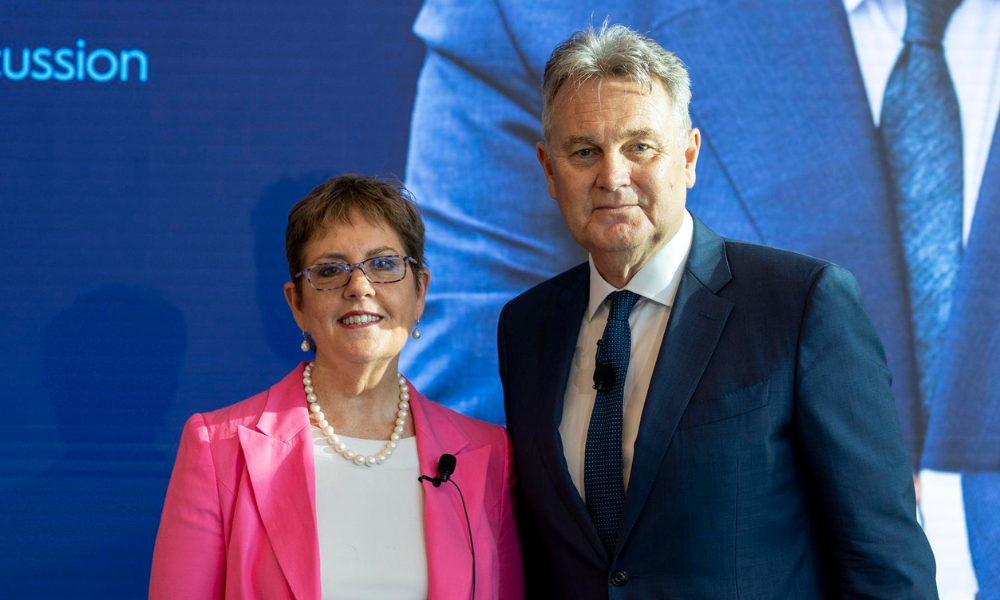Societal shift at play, AMP research shows

While homeownership remains the dream for many Australians, a new AMP report suggests that the perception of wealth goes further than owning a home.
Rather than bricks and mortar, more people now view “wealthy” as having the financial freedom to live their desired lifestyle, findings showed.
Conducted by AMP and leading demographer Bernard Salt (pictured above right), the report used a range of demographic data and analysed key societal developments over the past five decades, to explore what it meant to be wealthy in Australia today, and how and why attitudes had changed.
Results showed that more Australians define wealth as having the ability to pursue passions and support the people they care about.
Having reviewed homeownership census data back to 1911, findings showed that ownership rates in Australia peaked at 73% in 1966. Since then, homeownership rates have steadily declined, to around 63%.
While homes were still the key wealth asset for many Australians, more viewed being wealthy as having the financial freedom to live their desired lifestyle, AMP said. This may be achieved through more “liquid forms of wealth”, such as savings, equities and other managed investments.
AMP CEO Alexis George (pictured above left) said the report highlighted the nation’s attitudes to wealth, values and how finances were managed, which she acknowledged had shifted “significantly” over the past 50 years.
“No longer anchored just to homeownership, the concept of wealthy is now defined by a financial ability to pursue unique passions and goals, which often includes helping those close to us,” George said.
The importance of a financial plan
Given that the definition of wealth has broadened, George said Australians should consider having a financial plan outlining what they want to achieve.
“Modern day wealth requires us to consider what our goals are and to put a financial plan in place. The earlier we do this, the more likely we are to achieve those goals,” George said.
Overall, financial literacy in Australia is low and financial advice remains out of reach for many, she said.
“Improving financial literacy, offering greater access to financial advice, retirement and other investment solutions are key ways financial services organisations like AMP can help Australians engage more with their finances, so that they can achieve the wealthy they want,” George said.
Many values remain the same
A singular focus on homeownership in the mid-20th century delivered a sense of security to returning diggers, when getting married, having children, buying a house and holding a steady job were values that shaped the times, Bernard Salt said.
Australians now have a range of objectives, such as homeownership, the pursuit of options around how and where they work, how and when relationships are formed and desired lifestyle, many of which has changed dramatically since the 1960s, he said.
“What has not changed is the value of health, of personal relationships, of family, of the ideal of provisioning for children, of helping grandchildren,” Salt said.
However grand or modest, being ‘wealthy’ means people can live the lives they want, to benefit those they love and care about, both now and in the future, he said.
AMP research identifies opportunities for brokers
In February, AMP conducted online research among 1,000 participants aged 18 and over who had a mortgage, to understand the impact of rising interest rates and attitudes towards refinancing.
Findings showed that almost half (45%) were unsure if their home loan rate was competitive and that 49% were considering refinancing.
AMP Bank group executive Sean O’Malley (pictured immediately below) told MPA that he expected an increasing number of homeowners to shop around for a better interest rate.

For brokers, this not only opens the door to new clients, but is also a reminder to check in with existing clients to check if their home loan is still fit for purpose, he said.
While findings showed that seeking a better rate was the key motivator to refinance, other common reasons are to consolidate debt, change repayments and switch lenders, he said.
“With this in mind, there’s certainly an opportunity for brokers to have that value-add conversation with customers, and for both brokers and lenders to educate their customers across the range of benefits of refinancing, and options available to them,” O’Malley said.
As with other lenders, O’Malley said that AMP was fielding an increasing number of refinance queries.
“We’re continuing to focus on ensuring we have the right technology in place to support our brokers and deliver for customers,” O’Malley said. “The team is working on ongoing enhancements to the lending origination and settlement experience. We’ll have more news to share very soon.”



